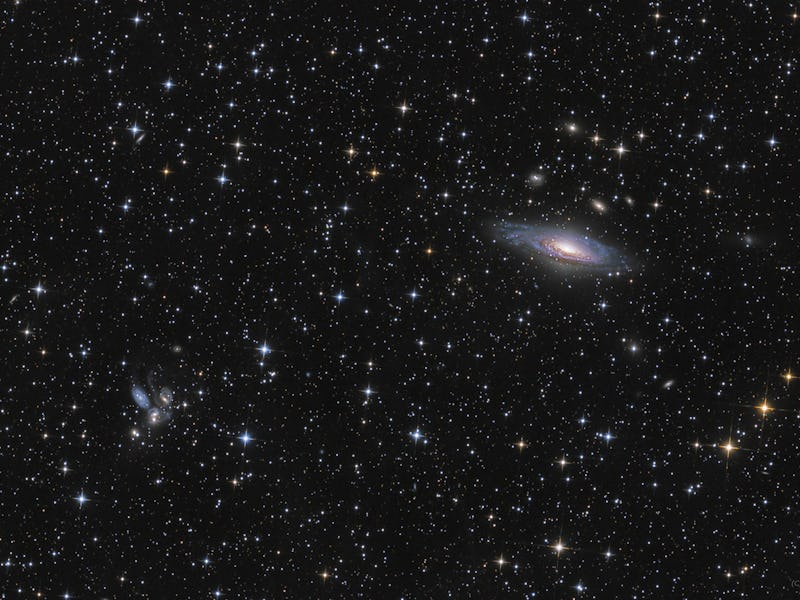About 300 million light-years away, four galaxies are colliding in a flurry of superheated gas and X-rays, and a Hungarian astrophotographer captured it in October. A half-degree away in the sky, in the constellation Pegasus, (but about 250 million light-years closer to Earth) is the galaxy NGC 7331, a spiral galaxy similar to our own Milky Way.
The four colliding galaxies (in the bottom left of the photo) are known as Stephan’s Quintet (a fifth galaxy appears to be nearby but is actually 260 million light-years closer to us than the other four) after their discoverer Edouard Stephan, who described them in 1877. One of the galaxies, NGC 7318b, is crashing into the other three at a speed of 200 million miles per hour and stripping away a lot of their hydrogen while emitting X-rays, as gas is heated during the high-speed collision. They look like spiral galaxies now, but once the collision’s over they’ll be elliptical in shape.
Stephan's Quintet collides in the bottom left and NGC 7331 is in the upper right.
Over on the right side of the photo is NGC 7331, a big, bright spiral galaxy that can actually be seen with a decent pair of binoculars. It was first discovered back in 1784, and since then has been called the Milky Way’s twin. It turns out it’s not quite like our home galaxy (ours is actually a barred spiral), but NGC 7331 does have a bulge around the center like the Milky Way.
Photographer Peter Feltoti captured the image in October with close to twelve hours of exposure time. That’s a lot of effort, but the result is definitely stunning.
